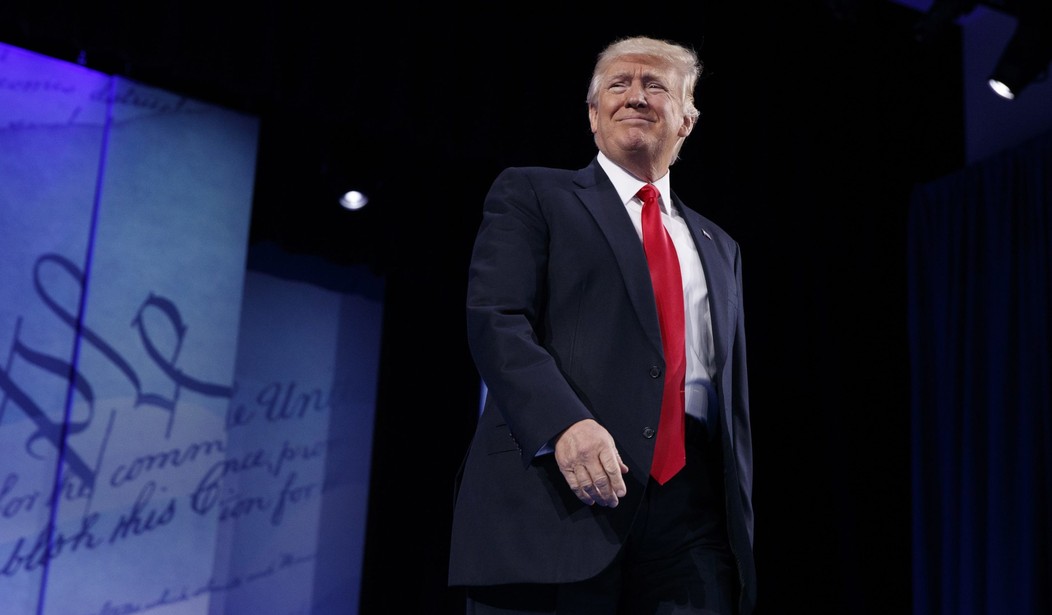I’ve been attending the Conservative Political Action Conference — CPAC — since 2010, first as a newbie Tea Party activist, and over time, evolving into somewhat of a veteran of the political process. This year’s conference was unique for many reasons and unlike any previous CPAC in my experience. I still haven’t decided if the evolution is positive. We are in a bit of a political limbo waiting to see how the new Trump administration works with Congress to fulfill its promises — or if it will at all. The Trump supporters are still in the honeymoon phase (to put it kindly), the Never Trumpers still reject everything Trump stands for, and those who are hoping for classically liberal policy solutions are wondering how much they’ll be marginalized by the new Trump-Bannon nationalism that is quickly becoming the new definition of the conservative movement.
My impression this year was that energy and attendance were down — way down. I don’t have official attendance figures, but attendance was significantly lower than last year. Things were actually calm. No controversies. The Ron Paul supporters are a distant memory. The Rent is Too Damn High guy wasn’t there to try to crash the party. The Milo Yiannopoulos thing became a non-factor, even before the conference started. The biggest thing that happened while the conference was going on was when Richard Spencer was ejected, which prompted thousands of conservative (not alt-right) activists to wonder, “Who the hell is Richard Spencer?”
Despite the calm and orderly nature of the proceedings, the lack of controversy doesn’t portend well. Not that I want to go back to the days when candidates paid to stuff the straw poll and Dick Cheney was harassed to the point of a cardiac episode, but there was a decided lack of buzz at this year’s CPAC.
That’s not to say it lacked interest. Radio Row had its regular share of visits from conservative rock stars, including Scott Walker, John Lott, Mark Levin, Ted Cruz, Sheriff Clarke, and even Dog the Bounty Hunter to add a little celebrity punch. I personally enjoyed being able to see a private screening of Evan Sayet’s new video, “A Deplorable Mind,” in which he discusses how he handles those difficult conversations with liberal family members.
To a great extent, Trump supporters are not the same grassroots activists who were spawned by the Tea Party. Rather, I should say, the Trump movement is not the same as the Tea Party movement. There are many super Trump volunteers and many folks who spent countless hours on the Trump campaign. At the heyday of the Tea Party movement, however, there were many more people involved and ready to jump into the deep end of the political pool — attending CPAC and other conferences, getting involved in the local Republican Party, running for office, and creating a grassroots army. Trump never spawned this kind of activism, opting for media attention and rallies over building a ground game. Of course, many Tea Party activists became Trump supporters, and there’s a good amount of overlap. The difference in the political principals combined with the differing political strategy means that the predominant political movement is different.
So that’s one reason that activists didn’t turn out at CPAC like they have in the recent past. The overwhelming sense, however, is that we’re waiting. Conservative activists are waiting to see what President Trump does. There are plenty of signs that campaign promises such as repealing ObamaCare, ridding us of Common Core, and achieving significant tax reform — three of the biggest issues for conservatives — are much more difficult to accomplish than a mere executive order. Never Trumpers and conservative purists are sizing up the Trump administration, almost like a heavyweight fight.
I use this imagery deliberately because this will not be a marriage of philosophies. Much of Trumpism — especially that defined by Steve Bannon in his CPAC speech — is antithetical to limited-government, pro-liberty conservatism. One can argue that protectionist trade policies and punitive tariffs on foreign goods and a trillion-dollar stimulus package are good for America or not, but they are not exactly Austrian economics. There are many activists who have simply traded out small government for protectionist nationalism. Others believe that Trump is a man of action and will drag Congress into ObamaCare repeal and tax reform by sheer force of his will. Many Republicans don’t know what to think, and advance some variation on the argument that, hey, he wasn’t my first or second or sixteenth choice in the primary, but he won and we’re all on the same team so it’s time to get over it, or did you vote for Hillary or something.
This hodgepodge of attitudes among conservative activists is, in my view, the main contributor to the lack of buzz at CPAC. I haven’t seen the numbers, but I would be willing to bet that attendance was down, but the TV ratings were up. Everyone — on the Left and the Right — wants to see what Trump is going to do. He’s had a flurry of activity in his first month-plus on the job, but we have yet to see a definitive direction from Congress, where all the heavy lifting is going to need to be done.
Ultimately, congressional action on Trump’s agenda is what will define his legacy and will help continue to shape what it means to be conservative. As my friend Brad Marston put it on Facebook, “[If the] GOP controlled Congress does not send a bill to repeal and replace Obamacare to said President’s desk this year you won’t be able to fit CPAC 2018 into three Gaylord Nationals.”










Join the conversation as a VIP Member